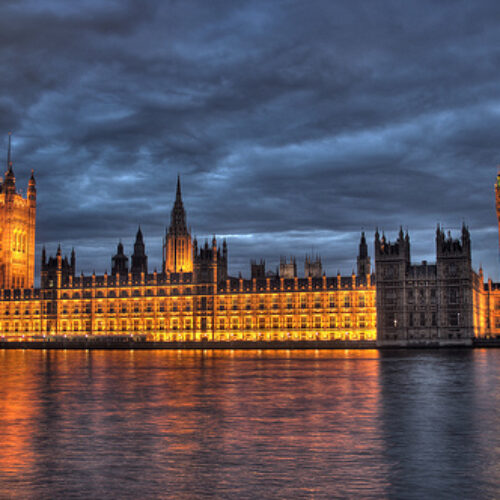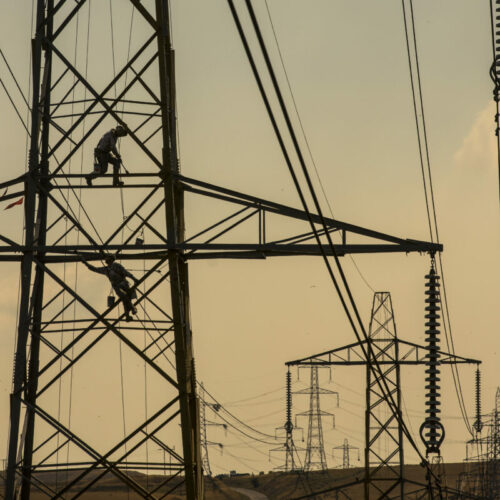The launch of new flexibility services could revolutionise how National Grid ESO manages winter peaks going forwards, Octopus Energy told Current± for this week’s Price Watch article – powered by LCP Enact.
Prices have stayed stable and low in recent weeks as the unseasonably warm weather continues, giving more time for both the operator and utilities to establish new services to manage the expected constraints.
Day Ahead: Low prices could ‘swing rapidly’ if temperatures drop
Over the last week, day ahead prices hit a high of £235.2/MWh today (14 November) and a low of £15.3/MWh on 11 November.
With the weather remaining mild as we move towards the middle of November, power prices have remained steady.
“We can expect highly weather dependent movements in power markets. This week wholesale prices are at their lowest in many months as warm weather has suppressed gas demand (although prices for Q1 next year are still incredibly high),” said Alex Schoch, head of Flexibility at Octopus Energy Group.
“This could swing rapidly with cold weather given the limited gas storage in the GB market.”
Intraday: Record high November temperatures keep demand low
APX Mid prices hit a high of £185.3/MWh on 9 November, and a low of £-64.38/MWh on 11 November.
While no wind generation records were broken last week, it remained a significant part of the energy mix for much of the week, with the windy weather helping to keep gas off the system, and in doing so keep the prices down.
Temperatures have remained mild, keeping demand relatively low for this time of the year as well.
New records have been set for the warmest November day in Northern Ireland and Scotland over the last week, as well as it being the warmest Armistice Day on record.
Imbalance: Flexibility services to ‘revolutionise’ ESO’s grid management
Imbalance prices hit a high of £261.88/MWh on 12 November, and a low of £-80/MWh on 11 November. They dipped into negative prices over multiple days last week as wind generation surged, bucking the high prices expected at this point in the year.
“Yes, last winter we saw Imbalance prices of ~£4,000/MWh on many occasions,” said Schoch.
“There is a theoretical peak of £6,000/MWh (the Value of Lost Load) but there remains some regulatory uncertainty as to how ‘hard’ this cap is. In principle NG ESO will accept prices above this to keep the lights on (and already have earlier this year), but this doesn’t necessarily pass through in Imbalance prices.”
One of the ESO’s key new services was officially given the go-ahead at the beginning of November, with the Demand Flexibility Service expected to provide an additional 2GW+.
“Flexibility services can absolutely revolutionise the way NG ESO manages peak demand in winter,” said Schoch.
“Large thermal power stations require firing for up to eight hours to meet a demand peak that only lasts an hour. Demand flexibility is incredibly efficient as it can be deployed just over the specific system peak, resulting in huge system savings for the grid and for customers. Fundamentally, it comes down to no longer just focusing on throttling power stations up and down to meet the national demand, but to allow willing homeowners to move their usage around for benefits, not just a few large industrial businesses.”
The Demand Flexibility Service is just one of a suite of tools available to National Grid ESO over the coming months, including contingency coal contracts. Find out more about what’s in the operator’s toolbox and how they could be used in LCP Delta’s upcoming webinar.
As well as the ESO launching a flexibility service, a number of suppliers have unveiled their own offers, including Utilita Energy’s “Power Payback”, Octopus Energy’s “Saving Sessions” and OVO Energy’s “Power Move”.
“Customers are ready and willing to participate in demand flexibility and this resource will be a cornerstone of a future grid,” said Schoch.
The Demand Flexibility Service will be a key proof point for customer flexibly, he continued, adding that it has the potential to accelerate grid resource’s contribution by several years.
“But we can’t just rely on a one-off, last-resort service. National Grid ESO should commit to making this a form of business-as-usual balancing, include turn up as well as turn down (which can help utilise more renewables and avoid curtailment), and guarantee the future of the service,” said Schoch.
“We expect to see a shift to more automated forms of demand response, through products like our Intelligent Octopus smart charging tariff. We welcome more steps to accelerate rollout of flexible technologies (such as DNOs speeding up grid connections).”
To find out more about LCP Enact, click here or follow them on Twitter or LinkedIn for the latest market updates.





